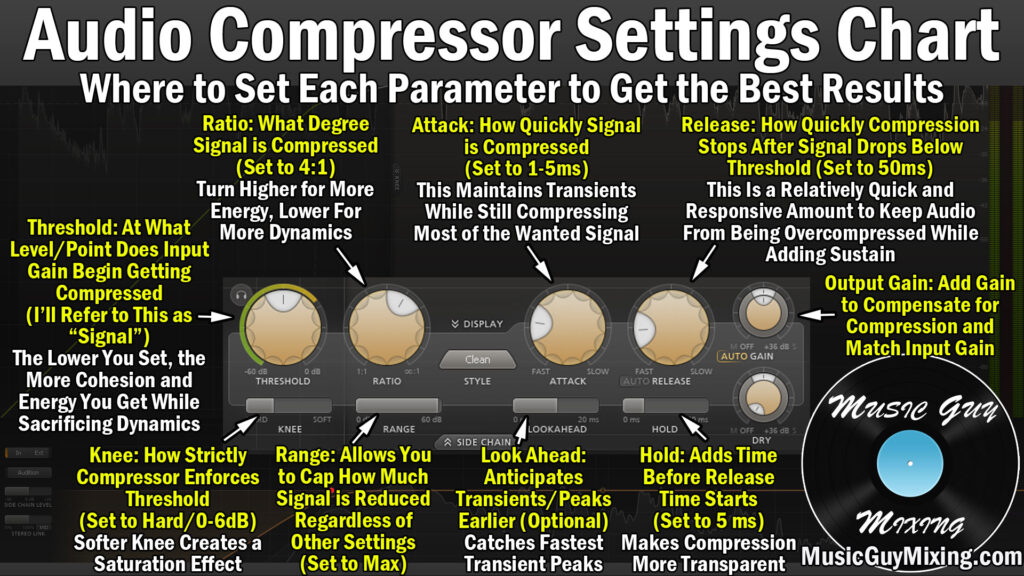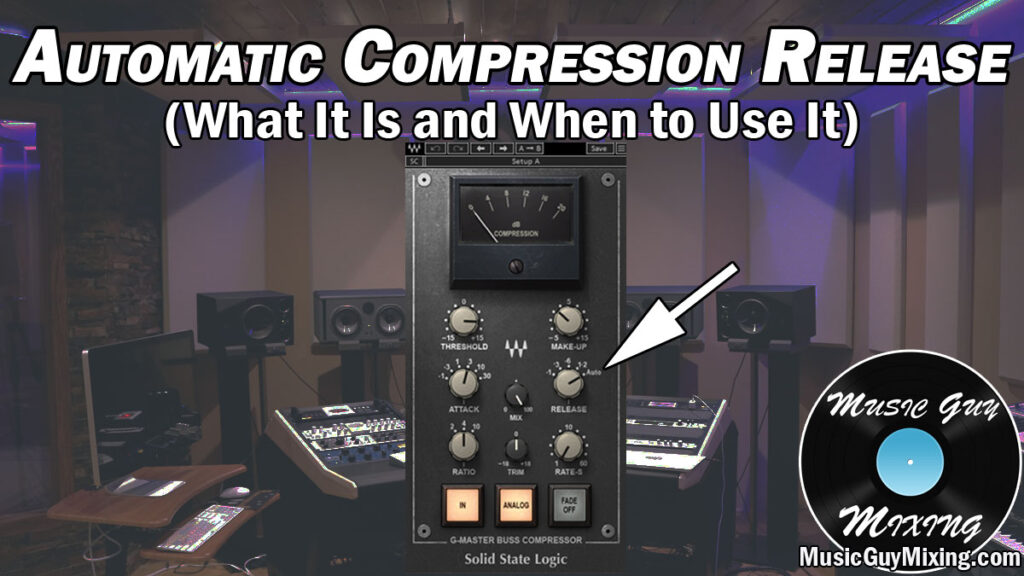An audio compressor is one of the most useful tools for processing your audio. Depending on the settings you dial in, you can add a little cohesion to or completely remove the dynamics of a clip of audio to ensure that it’s constant in your mix. Among the settings which drive the behavior of the compressor is the compression release time. One of the more nebulous settings, let’s identify what the compression release setting is and how it affects the compression of your audio.
Compression Release – What It Is and Does

The compression release determines how soon the compression fully disengages after the amount of gain from your audio drops below the set threshold.
This setting is typically measured in time and specifically milliseconds. That said, different types of audio compressors may represent this time in different quantifications.
The 1176 style FET compressor simply has a dial of 1-7, and it’s a bit counterintuitive compared to most compressors in that the highest number is the fastest/shortest release.
The Arturia Comp FET-76 makes it a point to specify that the higher numbers denote a faster time because these styles of compressors do work counterintuitively in that sense.

These compressors are an exception; most compressors measure release time in milliseconds. Typically the closer you set the dial to the left, the shorter/faster the release time becomes to near instantaneous.
Getting back to the purpose of the compression release, let’s say you set the release time to 50ms.
Once the audio level drops below whatever threshold you set, it will take 50 milliseconds for that compression to disengage. Instead of holding for 50ms and then completely disengaging, it eases the output level to where it should be gradually over that time.
This is compared to another one of the audio compressor settings, the hold time (which you can see is just below the release knob on the FabFilter Pro-C compressor:

The hold time keeps the compression fully engaged for the amount of time which you set.
Set the hold time to 100ms alongside 50ms of release time (for example) and, after the audio’s volume drops below the threshold, compression will remain fully engaged for 100ms (hold time) then ease the audio back to its uncompressed state for 50ms (release time).
I went into more detail in comparing the hold and release time in that link, so refer to that for more information.
How Much Release Time to Use
So how much release time do you need? Do you even need any release time on a compressor?
If you set the release time to be as short as possible, you’ll hear the volume of the audio abruptly snapping back up once the input level drops below the threshold.
Adding in some release time is important for creating a more natural and transparent (unnoticeable) compression which will typically be your goal.
Add too much release time, and the compressor can remain engaged indefinitely as by the time the release time ends, the audio level has dipped below the threshold once again so the compression will engage anew.
Finding the sweet spot requires careful attention and can vary from instrument to instrument and even track to track. Oftentimes you might decide you’re better off using the automatic compression release setting.

This setting reacts to the dynamics of your audio to utilize an evolving release time. If you’ve got complicated dynamic signal with a lot of notable peaks and valleys, you may be better off using an automatic release time. If you’ve got a more “predictable” signal like a kick or snare, you might be better off sticking to a specific release time (like I share in my kick compression and snare compression tutorials, respectively).
Remember that like the rest of the settings of your compressor, the release relies on and is affected by some of the other settings you dialed in, particularly the compressor’s threshold and the hold time as I just covered.
Find the perfect release time for every compressor on every track in your mix by checking out my dozens of compression tutorials here on Music Guy Mixing.

Pingback: The Perfect Snare Compression Settings - Music Guy Mixing
Pingback: The Best Compressor Settings for Vocals (Exact Settings to Use) - Music Guy Mixing
Pingback: The Best Autotune Settings to Use on Your Vocals - Music Guy Mixing
Pingback: Hi-Hat Compression - How to Compress Hi-Hats - Music Guy Mixing
Pingback: Parallel Compression Vocals Settings - The Best Settings - Music Guy Mixing